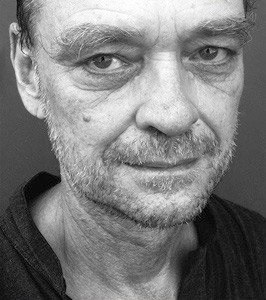
Wolfgang Widmoser has come a long way, and a very orthodox one. Born in Munich in the early fifties he appeared just in time to experience the troubled intellectual European scenery of what is now called the student's movement. To study art, Wolfgang Widmoser made a choice that seemed odd at the time...
He went to Vienna where Ernst Fuchs resided as the living antithesis to reductionist and politicised main stream art in Germany. Fuchs represented a school of indulgent sumptuous and luxurious anarchy, both bourgeois and nihilistic; a very Austrian tradition. Fuchs asked his students to learn painting in the manners of the Italian masters, using oil, varnish and shellac. Here Wolfgang learned about shade, shadows and lights. Considered a prodigy, he was sent for some weeks by Fuchs to Cadaques in Spain to study with Salvador Dali. Years of travel and searching followed. Wolfgang Widmoser - after some adventurous excursions in which he and his friends ambushed the Hamburg Art Academy with colour bombs - walked away in a very classical and German way.
Wolfgang went south to Italy following a tradition, since J.W Goethe's time, to discover the light and the lightness of being in the land of lemons - considered a must for poets and painters. On the way Wolfgang stopped over in Switzerland. Here, from his window, he painted the structure of rocks, mountain slopes and walls of conifers with a stubbornness that might be explained by his Bavarian roots. Wolfgang is a man of detail and as they say the devil is in the detail... Again and again he painted the same objects, rocks, moths and later sea shells which he found in Australia. Later in Italy his colours became brighter, the frames wider.
When he eventually moved to Bali he saw this as convenient though Wolfgang vehemently denies any links to the handicraft culture of the "Island of Gods" and he has no interest in such folklore and equally no romantic qualms about the place. He is mindful that even Gauguin had to learn that the bucolic idyll of Tahiti was in reality very different.
Wolfgang consistently painted series of still life works until he discovered the photos of Papuan faces that inspired him to obsession. These paintings are hugely formatted to show the human faces as landscapes. Very soon collectors and galleries became aware of the demanding quality of Wolfgang's work. He exhibited in Munich, Zurich, Milan, Tokyo and Hong Kong and some collectors commissioned wall paintings, in the fresco style, for their villas and lofts. Also he became interested in constructing futuristic homes and spaces with bamboo, influenced by the architect Frei Otto.
Wolfgang Widmoser is fanatical about painting classically with brush (and mirror) and yet he succeeds in seeing the world with eyes of the 21th century - a Renaissance-man in the age of scientific discovery.
Based on a script by Stefan Reisner




